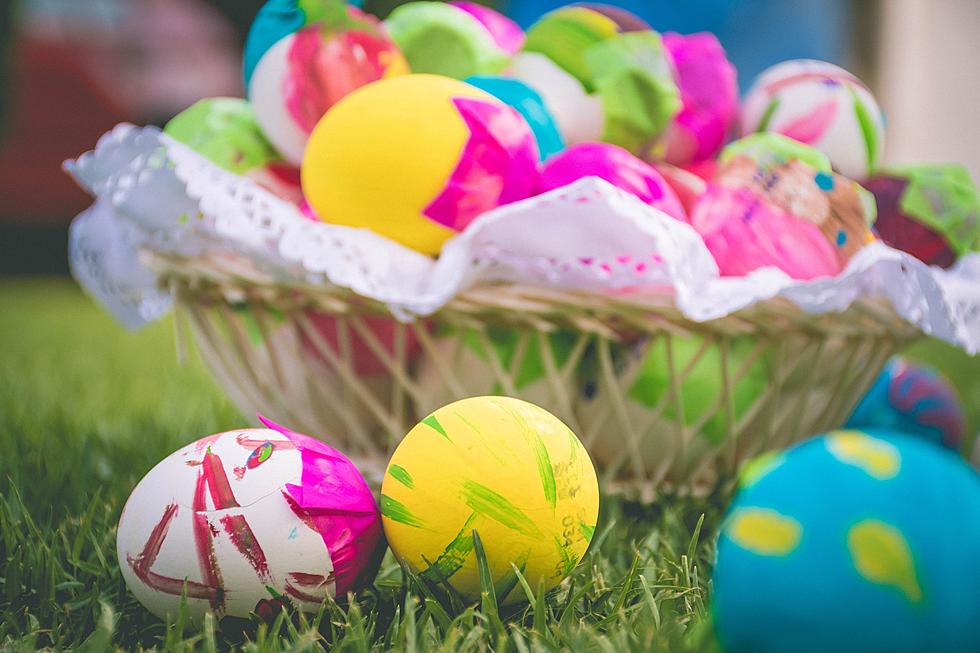
The Significance of the Easter Colors You See Across Louisiana
Whether you are dying eggs for the Easter celebration, decorating your table for the Sunday feast, or putting up beautiful decorations to celebrate the holiday, the colors associated with Easter really do have meaning.
Did you know that certain colors are meaningful to the Easter holiday season? For as long as any of us can remember, you will likely have noticed that yellow seems to be one of the predominant Easter colors.
We see chicks being represented with pictures, candy, and art in our decorations. When we dye eggs yellow is one of the colors that's usually in kits for dying. In addition, toys and stuffed animals often are yellow.
Easter also falls during spring which is a time of renewal. Often you will find gold taking the place of yellow in Easter celebrations. There are some beautiful meanings behind the colors that decorate our world during Easter.
Gold or Yellow in Place of Gold
The reason for Easter is to celebrate the resurrection of Jesus Christ. What better way to represent that gift to mankind than with the color gold? As far as Easter eggs, you might not find gold in a packet of dye, but you will find yellow which is most often used as a substitute for gold.
These colors represent the resurrection according to many sources. The colors represent the triumph of the resurrection of Jesus. You will also see gold and yellow in association with white which represents the resurrection and the divine.
Purple
During the time of Lent, you will often see the color purple represented in church and materials leading up to Easter. Purple is one of the colors of dye that come in most Easter egg kits.
Jesus is said to have worn purple robes in the time leading up to his crucifixion according to several references in the Bible. Purple is also the color of passion, as in the passion of Christ.
In Mark 15:17 in the Bible it reads as follows:
They put a purple robe on him, then twisted together a crown of thorns and set it on him.
The same is said in John 19:2 in the Bible:
The soldiers twisted together a crown of thorns and put it on his head. They clothed him in a purple robe.
Red
One of the most popular colors for Easter eggs is red! Red symbolizes the blood of Christ. While most of the colors of Easter seem to be pastel in nature, red is usually included in most standard Easter egg dyeing kits.
Red vestments are worn on Palm Sunday leading up to Easter as a way to show the blood of Christ and the sacrifice.
According to countryliving.com the colors of masses for Catholics date back to 1198, and that does have a bearing on Easter. Read the following:
First established when Pope Innocent III wrote the treatise De sacro altaris mysterio (The Mystery of the Sacred Alter) in 1198, the modern Roman color sequence of the Catholic Church is still followed today. In this treatise, the Pope based the colors' symbolism on interpretations of colors and flowers from the Song of Solomon in the Old.
Green
The color green is associated with Easter as a color of renewal and rebirth. This color is one that is seen often in spring and certainly in everything related to Easter.
The color green symbolizes new beginnings according to parade.com. Green is always associated with the Holy Spirit which makes up one-third of the Holy Trinity. The two other being the Father and Son.
Green can be seen throughout Easter celebrations from the Easter grass used in baskets to beautifully dyed green eggs. The color represents new life and the promise for the future.
Pink
Easter wouldn't seem to be Easter without the beautiful color of pink. Whether it's a pastel pink, a peachy kind of pink, or the riot explosion of fuschia, pink is a color constantly seen throughout Easter.
While there are not many references to pink when it comes to Christian services and vestments, there is one time. During the 40 days of Lent, the fourth Sunday during that time you will see priests with pink or rose-colored hues as part of their vestments.
Priests are given the option of wearing pink or rose-colored items in place of purple which is worn in Lent. By why? Simplycatholic.com explains Laetare Sunday is a time to express hope and joy during the time of Lent. It reminds us to look forward to Easter Sunday.
We hope you have a Happy Easter!
LOOK: 25 must-visit hidden gems from across the US
Gallery Credit: Abby Monteil
